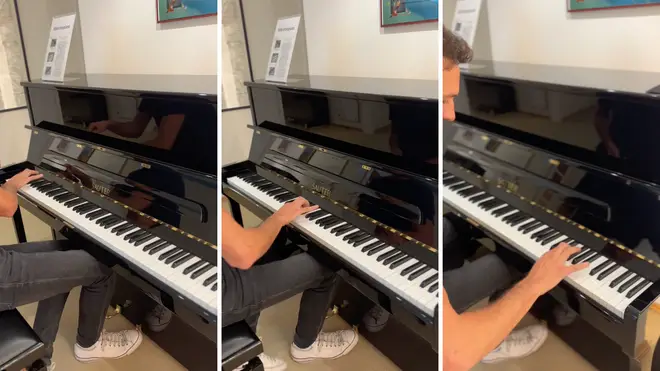On Air Now
The Classic FM Hall of Fame Hour with Tim Lihoreau 9am - 10am
5 October 2023, 21:40 | Updated: 5 October 2023, 21:47

Microtonal piano shown in clip
97 keys, and just a single octave. Take a listen to this microtonal piano, which disrupts all the standard rules of Western tuning.
This extraordinary piano contains just a single octave of musical notes, from its lowest to its highest note.
A standard piano is made up of seven octaves, each containing the 12 equal intervals tuned, as is customary in Western music, in equal temperament.
German piano manufacturer Sauter’s upright ‘Mikroton’ model, however, is made up of 97 keys – nine more than a standard sized keyboard.
Eschewing standardised piano tuning, the ‘Mikroton’ has a key-to-key pitch difference of a 1/16-tone, an eighth of the usual interval of a semitone.
“What appears to be a fifth actually sounds 1/16-step less than a half-step,” Sauter say on their website.
In the video above, YouTuber and TikToker ‘Antune’ – full name, Anto Bayram Karamenderes – tests out the piano by playing a chromatic scale all the way from its lowest note, middle C, to its highest note, the C above.
Read more: This incredible piano has 108 keys and a nine-octave range – and it sounds immense

The ‘Mikroton’ has 291 steel strings – three strings for each microtone. Sauter say the unique instrument is all about “capitalising on new soundscapes”.
It is one in a series of instruments patented in 1940 by Mexican composer and microtonal music pioneer Julián Carrillo Trujillo, who developed a theory of microtonal music which he dubbed ‘The Thirteenth Sound’.
He designed 15 ‘metamorphoser’ pianos, each tuned to scales using different, regular intervals, and persuaded the Sauter piano factory in the German town of Spaichingen, to build them.
Read more: This piano doesn’t have any black keys. How will it sound?
The instruments were exhibited for the first time at the Brussels World’s Fair in 1958. Each piano was tuned in a different way, using scales ranging from whole tones to sixteenth-tones. They were awarded a gold medal in Brussels.
Sauter argue that the sound of this particular piano is so fascinating because, “It does not replicate the sound of a traditional piano, but rather opens up new soundscapes by means of the consistently developing vibrations of the individual notes.
“This sound universe results in new tasks for the pianist as well as the composer who writes for this kind of instrument.”